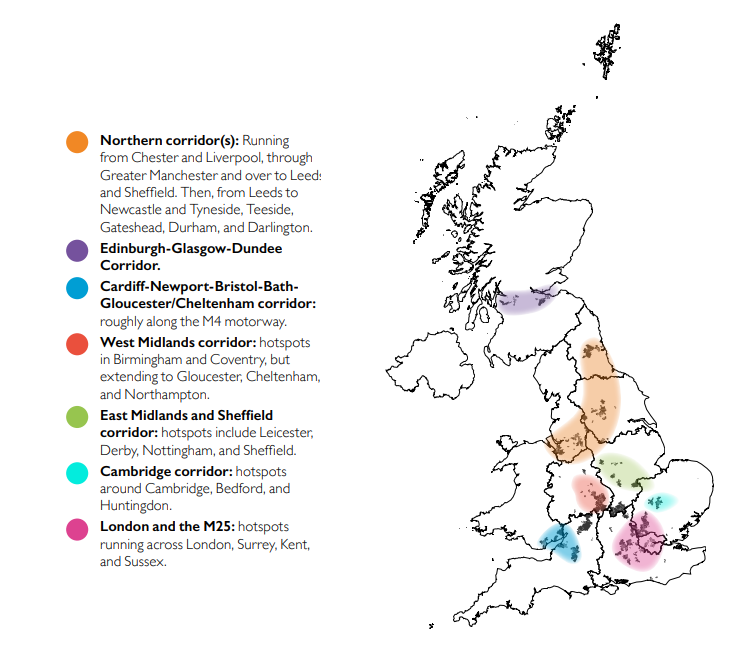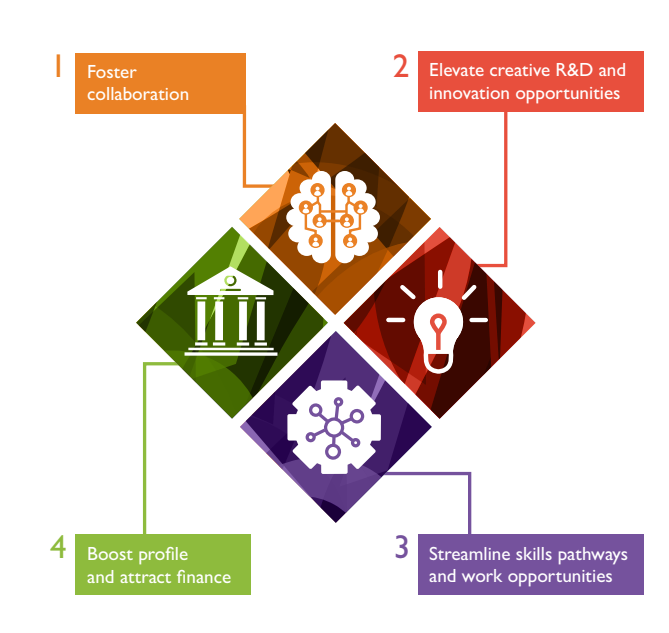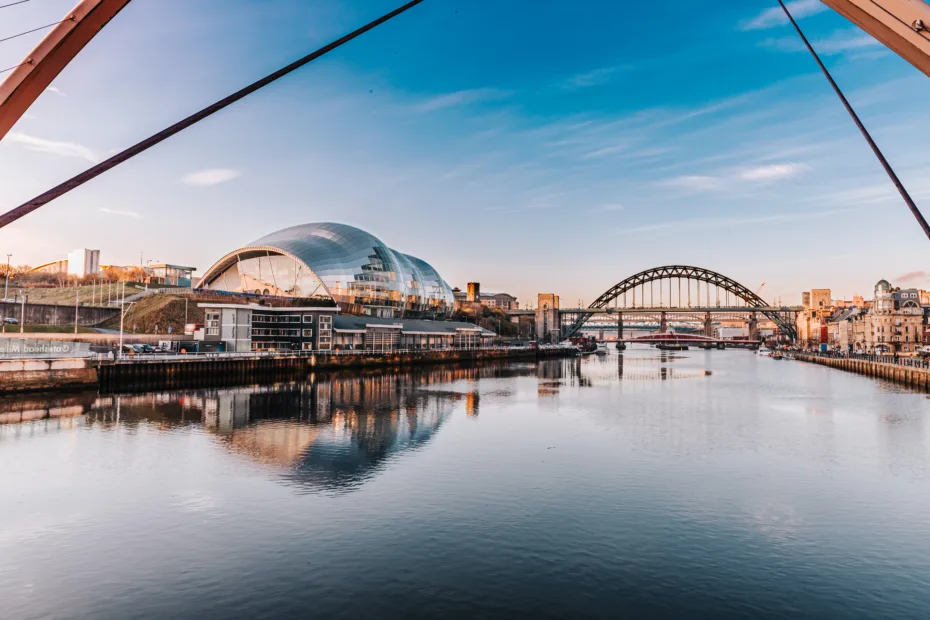Dr Emily Hopkins – Policy Adviser at Creative PEC
It’s always exciting to release a piece of work and see the reactions as people consume new data and take inspiration from the opportunities it leads to. Yesterday, at the launch of Creative Corridors: connecting clusters to unleash potential, metro mayors Tracy Brabin and Andy Burnham were obvious in their enthusiasm for leveraging all the benefits these corridors can offer.
So, are creative corridors the road to success for the creative industries? It’s the key question behind the new report funded by Arts Council England. As one of the report authors, alongside colleagues from the RSA, it is incredibly satisfying to see the Creative PEC’s work move from the page to begin to make practical differences. It also builds on our previous research into creative clusters and microclusters, which has been long supported and championed by our funders at AHRC.
The creative industries are a huge economic success story for the UK, with their consistent growth and resilience to shock combined with far-reaching social impacts for individuals and places. This success has been acknowledged in the recent Industrial Strategy Green Paper, which identified the creative industries as one of the eight growth-driving sectors in the UK.
However, it is well evidenced that the creative industries are one of the most geographically unequal sectors in the UK economy, with success not shared equally across the nations and regions. London and the M25 region accounted for 68% of UK creative industries GVA (£71 billion) in 2019 (Creative PEC, 2024), effectively creating a creative supercluster.

Map of creative clusters and potential corridors in the UK. (Sources: Creative Industries Policy and Evidence Centre, ONS Open Geography Portal)
What are Creative Corridors?
Creative corridors are one way that the untapped potential in regional creative industries can be encouraged and supported through unified strategies, investment and policymaking.
The idea of corridors is not new and has its origins in transport and innovation corridors, often in the US and Canada. Creative corridors are an evolving concept built on the backs of creative industries research into creative clusters and microclusters in the UK, which the Creative PEC has significantly contributed towards. Tailored interventions have successfully supported clusters across the four nations of the UK, including AHRC’s Creative Industries Clusters Programme. This latest evidence development has also taken place alongside the design and delivery of corridor interventions – for example, the Thames Estuary Production Corridor and emerging pan-regional creative development between Cardiff and Bristol.
It is hoped that establishing a policy framework for creative corridors may help to address barriers for growth in the creative industries. The aim is to scale up the economic benefits of joining up clusters and microclusters of creative industries in key geographical areas to build skills, create jobs, grow local economies, and improve the lives of the local communities in these places.
Creative PEC’s first State of the Nations report, Geographies of Creativity, presented experimental geospatial analysis pointing to seven broad geographic areas in the UK’s nations and regions which could become Creative Corridors:
Northern Corridor(s), Edinburgh-Glasgow-Dundee Corridor, Cardiff-Newport-Bristol-Bath-Gloucester/Cheltenham Corridor, West Midlands Corridor, East Midlands and Sheffield Corridor, Cambridge Corridor, and the London supercluster.
Why are Creative Corridors relevant now?
With the current UK political landscape moving towards increased devolution of power, it provides an opportunity to influence policy on a more local and regional level. Corridors provide a place-based policy tool for local leaders to harness and support creative industries while considering their unique local characteristics.

Creative Corridors Action Areas Framework. (Creative PEC, 2024)
What next?
While the research highlights specific geographic areas with already established hotspots of regional creative industry, this research is merely a starting point from which to grow. The strategy is a tool more than anything else, that if used, has the potential to positively change the landscape of creative industries across all regions in the UK. Leaders in place, policy and industry can now use this evidence to realise growth in areas of strength and forge partnerships that create impact at home and internationally.
The report and the launch event, which features the insightful discussion with metro mayors Tracy Brabin and Andy Burnham, visual artist Shanaz Gulzar (also Creative Director of Bradford 2025), and tech entrepreneur Tom Adeyoola and chair Annabel Turpin (also CEO of Storyhouse) is now available for download and online viewing.
